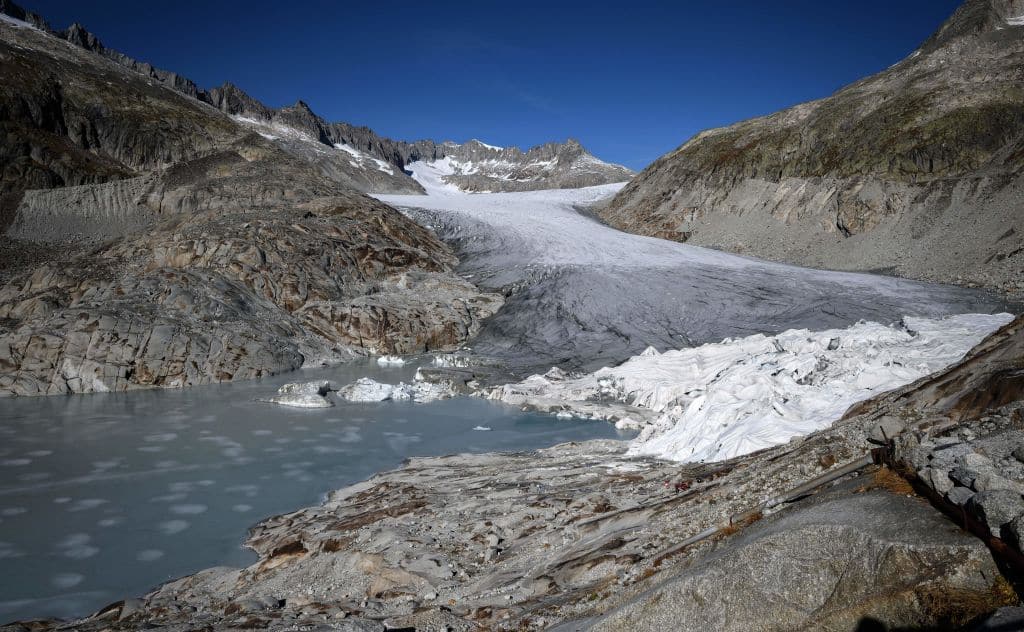World’s Glaciers at Serious Risk From Climate Crisis

 Why you can trust us
Why you can trust us
Founded in 2005 as an Ohio-based environmental newspaper, EcoWatch is a digital platform dedicated to publishing quality, science-based content on environmental issues, causes, and solutions.
The world’s glaciers are in serious trouble.
A new study published in Science Thursday calculated how different degrees of warming would impact the more than 215,000 glaciers that exist outside Antarctica and Greenland. It concluded that almost half of them could melt by the end of the century even if policymakers succeed in limiting warming to 1.5 degrees Celsius above pre-industrial levels.
“This is the most comprehensive and rigorous analysis of future glacier trends to date,” University of Bristol glaciologist Professor Jonathan Bamber, who was not involved with the study, told Carbon Brief. “There are some sobering statistics, such as half of all glaciers will have disappeared by 2100 even at 1.5C. Based on current national climate pledges, the situation will be a lot worse with serious implications for communities that rely on glacial runoff for water resources.”
Glaciers are hugely important. They provide water for approximately 1.9 billion people worldwide, as The Washington Post noted. Losing them deprives millions of people of this vital resource, as well as increasing the risk of glacier-related hazards like floods and landslides, according to a perspective paper on the findings, also published in Science Thursday. What’s more, glaciers currently contribute as much to sea level rise as the Greenland and Antarctic ice sheets.
“Glaciers provide drinking water, agricultural water, hydropower, and other services that support billions (yes, billions!) of people,” National Snow and Ice Center Deputy Lead Scientist Twila Moon, who was not involved with the research, told the Associated Press via email.
The paper was the first to look at how the climate crisis might impact each of the world’s glaciers between 2015 and 2100 and found that they were more at risk than previous estimates suggested, Carbon Brief explained. Study lead author Dr. David Rounce, an assistant professor at Carnegie Mellon University in Pittsburgh, Pennsylvania, explained that the research team was able to build on a 2100 study that detailed glacier loss over the past two decades.
“By calibrating our model with this data, we have a much more complete and detailed picture of the present-day glacier mass change compared to previous models that used regional data or in-situ measurements from a limited number of glaciers,” he said.
They found that, if world leaders manage to limit global warming to 1.5 degrees Celsius as per the reach goal of the Paris agreement, around 104,000 glaciers would melt and sea levels would rise by just less than four inches, according to The Washington Post.
If temperatures rise to 2.7 degrees Celsius above pre-industrial levels–which was what national policies put the world on track for ahead of the COP26 climate conference–that would melt 68 percent of the world’s glaciers and raise sea levels by 4.5 inches, pushing more than 10 million people below the high tide line, the Associated Press reported. It would also essentially wipe out the glaciers of central Europe, western North America and New Zealand, according to Carbon Brief. Four degrees of warming would melt 83 percent of the world’s glaciers.
“Any reduction in the temperature increase will have a substantial impact on sea-level rise and the loss of glaciers globally,” Rounce told The Washington Post.
In addition to the loss of drinking water or coastline, the disappearance of glaciers will have a devastating impact on many people’s cultural identity.
“Significant loss of glaciers means that we are not only witnessing a change in landscape or a loss of natural resources, it means that we are actively complicit in robbing the future from our children,” University of British Columbia-based Indigenous anthropologist Dr. Pasang Sherpa, who comes from Pharak in the Nepalese Himalayas and was not a part of the research team, told Carbon Brief. “What are mountain peoples without the mountains as we know them?”
However, while the news the scientists reported was bleak, they did not see it as an excuse to give up on mitigating climate change.
“For many small glaciers it is too late,” study co-author Regine Hock, a glaciologist at both the University of Alaska Fairbanks and the University of Oslo in Norway, told the Associated Press. “However, globally our results clearly show that every degree of global temperature matters to keep as much ice as possible locked up in the glaciers.”
Subscribe to get exclusive updates in our daily newsletter!
By signing up, you agree to the Terms of Use and Privacy Policy & to receive electronic communications from EcoWatch Media Group, which may include marketing promotions, advertisements and sponsored content.

 233k
233k  41k
41k  Subscribe
Subscribe 




